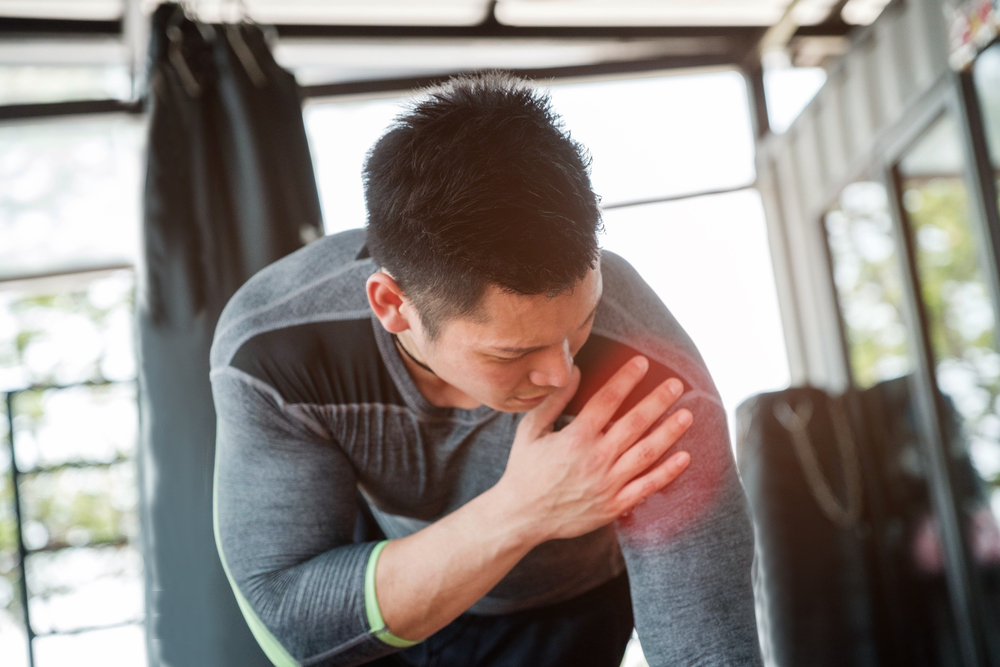Top Categories
Understanding Rotator Cuff Injuries
Rotator cuff injuries affect the shoulder, and they can impair its functionality, leading to pain, weakness, and reduced mobility. The rotator cuff itself is a group of muscles and tendons that surround the shoulder joint and facilitate a wide range of movements like lifting and rotating the arm.
Injuries to this area can occur from acute trauma, repetitive overuse, or gradual degeneration over time. By taking proactive steps towards maintaining good shoulder health, these injuries can be prevented and you can continue to engage in your favourite activities with comfort and ease.
1. Practise Proper Warm-Up and Stretching Before Activities
Proper warm-up and stretching enhance blood flow to the muscles and increase flexibility, reducing the risk of strains or tears.
A good warm-up activity, like 5-10 minutes of light aerobic exercise, will slowly increase your heart rate and loosen up the muscles and joints. After warming up, do some gentle, static stretches that target the shoulder area like these:
Pendulum Stretch: Lean over slightly, allowing one arm to hang down, and swing the arm gently in small circles. This stimulates blood flow and gently stretches the shoulder muscles.
Cross-Body Reach: Bring one arm across the body at shoulder height, and use the opposite hand to press it closer to your chest until a gentle stretch is felt in the shoulder. Hold for 15-30 seconds, then switch arms.
Doorway Stretch: Stand in an open doorway, raise each arm and bend your elbows to form a 90-degree angle, with your palms resting on the door frame. Gently lean forward until a stretch is felt in the front of the shoulders. Hold for 15-30 seconds.
Incorporating these stretching exercises into your regular workout routine improves flexibility and strength for the muscles around the rotator cuff, reducing the likelihood of injury.
2. Conduct Shoulder Strengthening Exercises Regularly
Doing shoulder strengthening exercises can create a more resilient shoulder joint capable of withstanding the demands of daily activities and sports. Here are some examples that you can incorporate into your routine:
External Rotation: Hold a lightweight dumbbell in one hand while standing. Keep your elbow close to your side at a 90-degree angle, and slowly rotate the arm outward, away from your body. Return to the starting position and repeat.
Wall Push-Ups: Stand at an arm’s length away from a wall and place your palms against the wall at shoulder height. Bend your elbows to lower your body towards the wall in a controlled motion, then push back to the starting position. Perform 2-3 sets of 10-15 repetitions.
Shoulder Scaption: Stand with your feet shoulder-width apart, holding a light dumbbell in each hand. Bend your elbows slightly and raise your arms at a 45-degree angle to your body until they are at shoulder height. Lower them slowly back to the starting position and repeat 10-15 times for each set.
3. Maintain Good Posture
Good posture aligns the shoulders, spine and hips and it reduces stress on the rotator cuff muscles and tendons.
Standing: Make sure you keep your shoulders back and relaxed, chest out, and chin tucked in slightly. Your ears should be aligned over your shoulders to avoid leaning forward.
Sitting: While sitting, keep your feet flat on the floor and your knees at hip level. Your shoulders should be relaxed, and your arms should rest comfortably on your desk or chair arms.
Another good practice is to adjust your desk and chair height so that your arms are at a 90-degree angle when typing, helping to reduce strain on your shoulders. Your monitor should be at eye level and at least an arm’s length away, to avoid leaning forward or looking down at the screen.
4. Limit Overhead Activities to Reduce Stress on the Shoulder
Continuous overhead motion can lead to overuse injuries, including tendinitis and tears in the rotator cuff tendons. To preserve the health of your rotator cuff, it is beneficial to limit the frequency and intensity of these activities.
During sports that involve overhead actions, like tennis or volleyball, focus on using proper form and techniques. Training with a coach or a physical therapist might be useful for this.
If your job or hobby requires overhead work, try to rotate tasks to avoid prolonged periods of overhead activity. Take regular breaks and perform other types of tasks to help minimise strain.
Most importantly, pay attention to signs of fatigue in the shoulder, such as aching or weakness, and rest accordingly.
5. Ensure Adequate Rest and Recovery for Shoulder Health
Engaging in continuous or intense physical activities without allowing time for the shoulder muscles and tendons to recover is not recommended.
Incorporate rest days into your exercise regimen to allow your muscles to recover fully. This is especially important after intense or prolonged physical activity. If you experience any pain or soreness, give yourself additional rest days to recover before resuming strenuous activities.
You should also be sleeping enough to support the body’s natural recovery processes. Proper sleep not only helps repair muscle tissues but also improves overall physical health.
Conclusion
Rotator cuff injuries may be common but they can be significantly mitigated through preventive measures. By implementing these 5 practices into your daily routine, you can reduce the risk of injury to your shoulders.
Listen to your body, make adjustments to your activities as needed, and seek professional advice when necessary. Do note that these tips are preventative and they are not a substitute for professional medical advice on existing injuries. If you do suspect that you may have injured your rotator cuff, contact our sports medicine specialist today for a thorough diagnosis.




